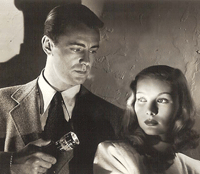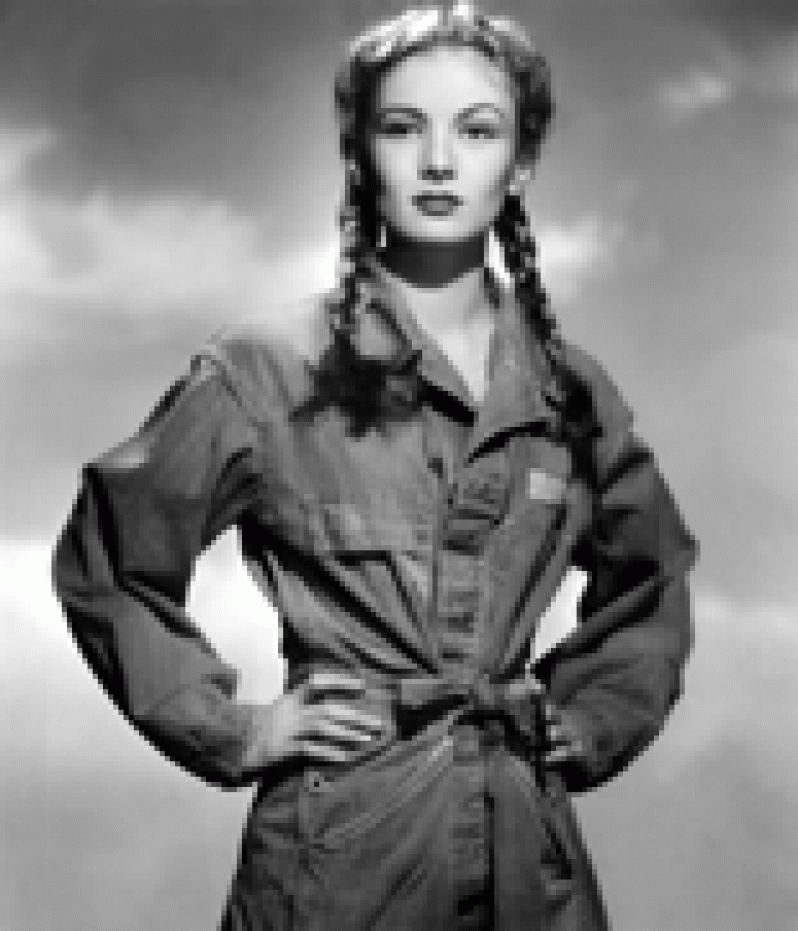VERONICA Lake’s screen influence was made possible and created by a vision of social pleasure and resolution of social problems via a type of cinematic art which pervaded Hollywood studios, particularly from the 1930s to the 1950s. The ability of a film to carry an attractive personal and social attitude depends perhaps even more on the actor/actress than on the film director, who asks of them certain portrayals, and producers who agree to sponsor the project.
Lake’s screen persona Lake’s persona on screen took individual command of her roles via the makeup of her screen personality, which is not her real self (though attractive and pleasurable), since we do not know Lake’s real self. So attractive was this screen persona that at the mention of her name appearing in a film, people wanted to see her, precisely because it was her screen persona more than the specific characteristics of her role which took the lead.
Lake’s persona on screen took individual command of her roles via the makeup of her screen personality, which is not her real self (though attractive and pleasurable), since we do not know Lake’s real self. So attractive was this screen persona that at the mention of her name appearing in a film, people wanted to see her, precisely because it was her screen persona more than the specific characteristics of her role which took the lead.
One of the theories of filmmaking which became influential among critics and film-fans, was the ‘auteur theory’, a style of directing described by one of the American originators of the style, Frank Capra, as ‘One man, one film’, meaning that the film director, like an individual writer of a novel, short story, poem, etc, while using the input of others as references, quotations and models in his works, arranges, structures and edits this input so that the finished work bears his stamp of creativity.
Hence Capra’s ‘One man, one film’ idea, which has nothing whatsoever to do with Capra’s later Republican Party support in America. The approach is not dictatorial, since the result actually exposes just how humane and flexible, or insensitive and biased the director is.
It was the French film critic, Alexander Astruc who coined the term for this ‘auteur’ creative process as ‘Le camera stylo’, meaning that the director’s camera writes a style like an author writes a book.
Veronica Lake is like an ‘auteur’ actress; she is part of a creative team, but she is not their puppet, since she is capable of projecting and integrating her personal acting style within the demands of the role.
1940s Hollywood
Lake is one of the most beautiful female cinematic products of Hollywood during World War II. This is not simply a historical fact of no significance today, since World War II brought to international attention the mental aberration of a specific intolerant and aggressive philosophy of racial superiority and dominance over others. The world of cinematic art in the 1940s had to decide its position on this issue, and this situation led to a bonanza of highly just and moral films, which isolates Hollywood film production of the 1940s as highly exemplary and necessary right down to the present age.
Lake’s presence in films of this era was assisted by the Franklin D. Roosevelt’s government view that Hollywood should promote more just and non-discriminatory values, not just for American audiences but the world, where such films were seen. For example, Roosevelt’s founding of the OWI (Office of War Information) involved the supervision of American films by highly intelligent and artistic military personnel, whose job it was to know about cinematic art in detail, not just about guns and combat, and to prevent or curb some American film creations which, misguided by patriotic zeal, might use the industry and medium to portray slurred images of all Germans and their Japanese, Italian and Spanish fascist allies as absolute enemies, when in fact it was not the citizens of these nations who were enemies, but the Nazi and Fascist elements within such nations guiding their policies and actions on neighbours and the world stage.
Critical roles
The result was that the bulk of Lake’s 1940s film roles (and they are mostly of that decade) act as a powerful criticism of bigotry, bias, sleazy corruption, and also neo-Nazism within America, at a time when such elements were apparently thought of as being mostly outside America.
Lake’s ability to deliver this critical dimension on screen is initially indebted to the brilliant screen adaptation of equally brilliant novels and creative writing by deservedly popular British and American creative writers like Graham Greene, Dashiel Hammett, and Raymond Chandler.



.jpg)









